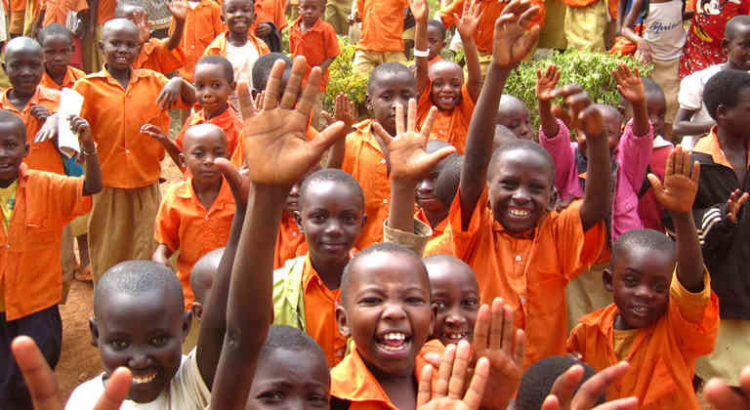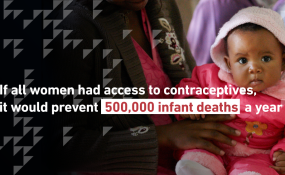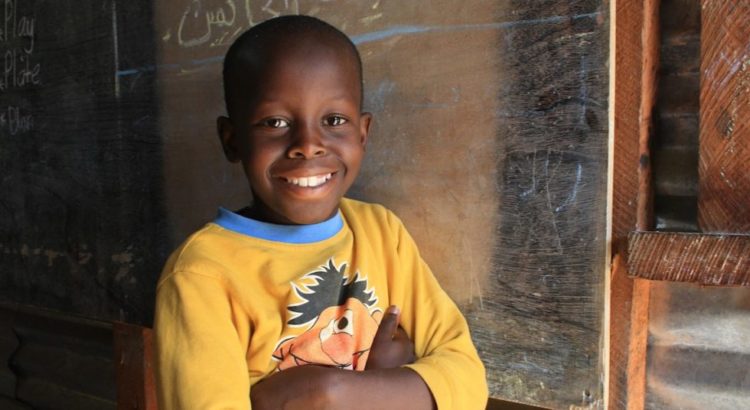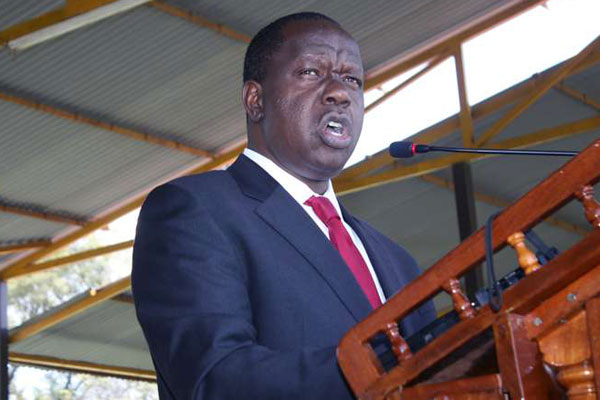Colombia / www.semana.com / 29 de Marzo de 2017
Después de una de las historias más violentas y sangrientas del siglo XX, Ruanda se reinventó desde las aulas. Un ejemplo de éxito para el mundo y repicable para Colombia.
Ruanda podría ser conocido en el mundo por su biodiversidad: sus hermosos bosques y gorilas son suficientes para identificar al país de África Central con una nación de maravillosos parques naturales, fértiles campos y más de 1.000 colinas. Pero, por desgracia, su fama no proviene de la belleza de sus montañas que se desdibujan al atardecer, ni de los alaridos de los gorilas, sino de un pasado terrible. Como les ha pasado a las naciones que han sufrido de crueles enfrentamientos, Ruanda es conocida por su historia.
Los tutsis dominaban a los hutus antes de la llegada de los europeos. Pero la diferencia étnica se acrecentó cuando la corona belga gobernó el territorio con criterios raciales que dividían al pueblo en una pirámide. En la cima estaban los blancos y a medida que aumentaban la pigmentación de la piel, iban degradando a la población. Cuando administraban lo que hoy es Ruanda, dividieron a las personas según su raza: los tutsis, una etnia minoritaria, pero más blanca, con la nariz menos chata y más alta, gozaban de privilegios especiales, como el acceso a la educación; los tutsis, más negros y de menor estatura, quedaron en los últimos peldaños.
La medida propició el odio, la envidia y la segregación. Los tutsis detentaban el poder político a mediados del siglo XX, pero las revueltas hutus, apoyadas ahora por los belgas, invirtieron el orden existente, en especial, después de que declaron la indpendencia en 1962. Los europeos apoyaron a los hutus en su rebelión, como si un cambio de régimen fuese la solución. El resultado fue que miles de tutsis huyeron del país, mientras otros veían cómo la administración pública era captada únicamente por los hutus. Desde los cargos públicos se incentivó la exclusión.
Puede leer: Los 10 cursos virtuales preferidos por los colombianos
Años después, en la década de los noventa, los tutsis empezaron a organizar guerrillas, como el Frente Patriótico Ruandés (FPR). Empezó una guerra civil que se confundió con un enfrentamiento étnico. El gobierno hutu motivó la limpieza étnica, apoyado por grupos paramilitares. Ocurrió entonces una masacre que se llevó a más de un millón de personas y cerca del doble de esa cifra se convirtieron en refugiados alrededor del mundo, mientras la comunidad internacional permanecía indiferente. El país quedó destruido y la economía, devastada.
El pasado de odio y de exclusión, la colonización, la lucha étnica y luego el genocidio parecían haber marcado irremediablemente el futuro de Ruanda. La corrupción y la violencia eran como sogas imposibles de romper. Sin embargo, Ruanda ha demostrado después de dos décadas que es posible reconstruir un país: ha disminuido los índices de pobreza, de mortalidad infantil y ha tenido un crecimiento económico sostenido. Además, según los índices de Transparencia Internacional, Ruanda es el segundo país menos corrupto de África, después de Mauritania. Y aunque las comparaciones son de mal gusto, hay que decir que Ruanda está 40 países mejor calificado que Colombia.
La explicación de esta transformación, según el plan de desarrollo de Ruanda (2013-2018), es la educación que empezó desde las aulas y ha tenido unos logros sin precedentes en el continente africano. Cuando en Colombia se citan ejemplos y se investigan experiencias exitosas, el país centroafricano debería ser un ejemplo, más allá que la lejana Singapur. No solo porque ha ganado menciones internacionales, como el premio a las buenas prácticas educativas del Commonwealth en 2012, por sus estrategias de innovación, de ampliación del acceso y por las estrategias para mejorar la calidad educativa, sino porque ha aprendido a afrontar un pasado terrible desde la educación.
¿CUÁLES FUERON LAS ESTRATEGIAS?
1. Hay una gran claridad de metas medibles y cuantificables. Pero no se trata únicamente de medir: los objetivos se construyen después de un proceso de consulta, de asistencia pedagógica y luego viene un seguimiento minucioso para monitorear el cumplimiento.
Le puede interesar: El hombre que recorre Latinoamérica en busca de la mejor escuela
2. Asignación presupuestal clara por sector. No se trata de gastar más en educación, como si eso por sí solo fuera un logro, sino de justificar en qué se gastará, cuánto y para qué. El Ministerio de Educación explica, por ejemplo, cuánto está destinado para la elaboración del currículo, los libros de texto, la capacitación de profesores, entre otros rubros. Al final del año se coteja el plan con el porcentaje ejecutado.
3. Algunos de los principales objetivos han sido aumentar la cobertura en primaria y en secundaria, y disminuir el número de repitentes y la relación entre estudiantes y profesores. Desde luego, todavía hay dificultades: muchos jóvenes mayores todavía están en primaria por haber ingresado tarde a la escolaridad, y en 2016 disminuyó el promedio de estudiantes en bachillerato, en relación con los avances del 2015.
4. Hay una relación entre el mercado laboral y los estudios superiores. El objetivo es que las habilidades necesarias de los sectores productivos correspondan con las capacidades desarrolladas en los claustros. Ese es uno de los grandes retos de la educación en todo el mundo y se está resolviendo en Ruanda. Según el Tracer Study, una investigación sobre los vínculos de la eduación superior y el mercado laboral, el 80 % de los empresarios están satisfechos con la formación de los profesionales.
Lea también: Los colombianos estudian más de lo que los empleadores necesitan
5. Más allá de los planes generales, como ampliación de la cobertura, el Ministerio de Educación ha atendido los detalles con políticas específicas para resolver las dificultades. Por ejemplo, los maestros de preescolar solían estar peor pagados y tenían una débil formación pedagógica. Entonces, se tomó la medida de igualar salarialmente a los docentes y se empezó un programa de cualificación de los docentes de preescolar.
6. Se puede contar con un gobierno que establece metas pertinentes, que las controla, pero es fundamental la articulación. Por lo tanto, fue crucial crear un nuevo currículo que guiara el desarrollo de libros de texto, con material didáctico y pedagógico para todas las facetas del aprendizaje. No se podía redefinir la nación sin pensar antes en para qué educar, cómo enseñar los contenidos, cuándo y qué tipo de prácticas deberían incentivarse.
7. Para superar el conflicto era necesario desarrollar la economía y el capital humano. Los objetivos además de ampliar el acceso equitativo y de combatir el analfabetismo, eran promover la ciencia y la tecnología, el pensamiento crítico, los valores positivos, la lectoescritura, el razonamiento analítico y la creatividad.
8. Sin embargo, no era suficiente establecer objetivos, suministrar materiales educativos y enmarcados en lineamientos curriculares: había que acompañar a los maestros, hacerles seguimiento, formarlos y asistirlos cuando fuese pertinente.
9. Fue necesario hacer un plan de infraestructura, en especial, de sanitarios, pero también de laboratorios de ciencias y salas de computadores.
10. Existe una gran cooperación de la empresa privada con la educación; son especialmente importantes las comunidades religiosas, responsables de fundar numerosas instituciones educacativas. Además, muchas empresas han auspiciado el sector. Por ejemplo, la Fundación de Mastercard ha invertido para mejorar la calidad de la enseñanza y formar a los jóvenes en las habilidades necesarias del siglo XXI.
Fuente:http://www.semana.com/educacion/articulo/ruanda-el-sistema-educativo-de-ruanda/519915












 Users Today : 258
Users Today : 258 Total Users : 35459853
Total Users : 35459853 Views Today : 432
Views Today : 432 Total views : 3418404
Total views : 3418404